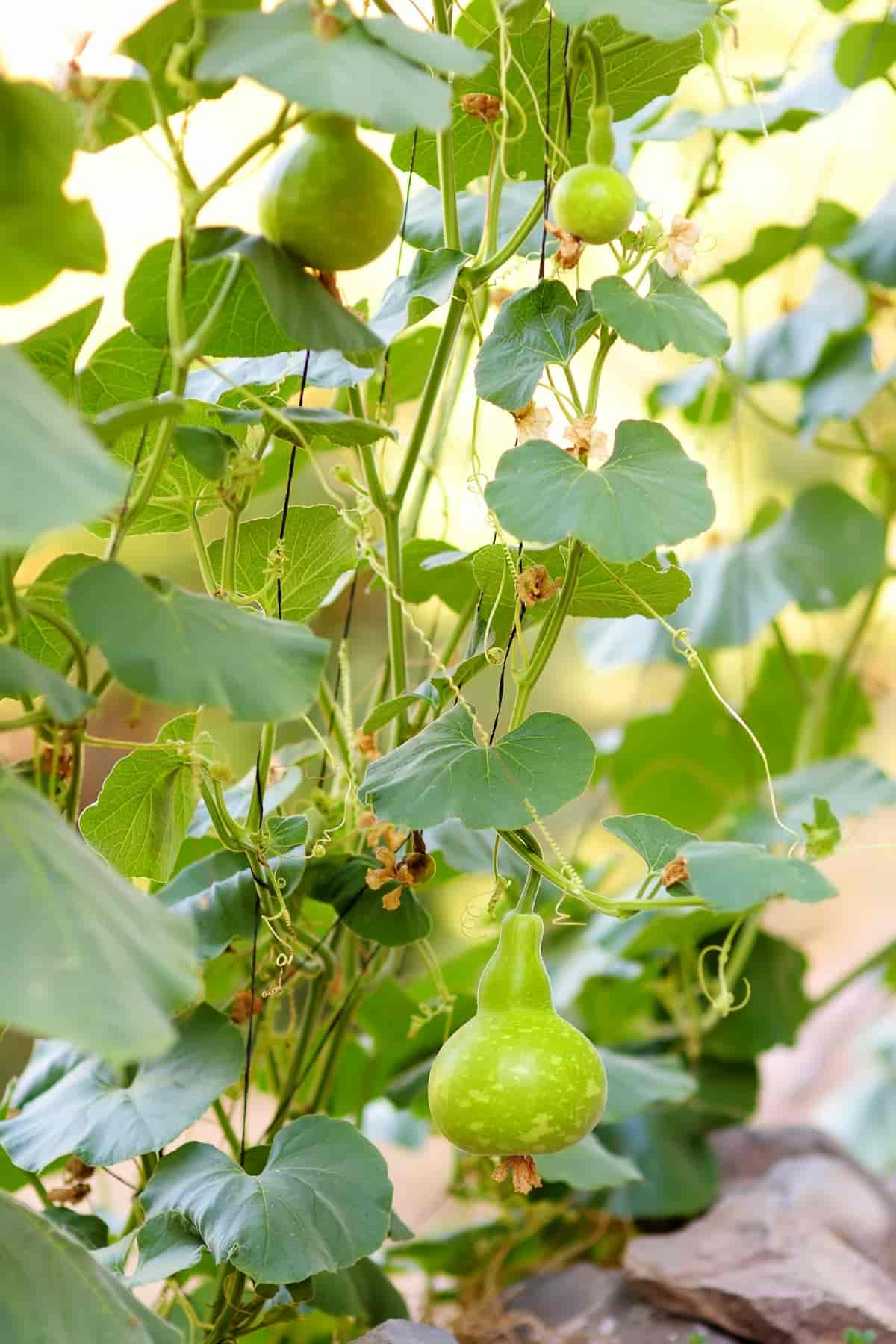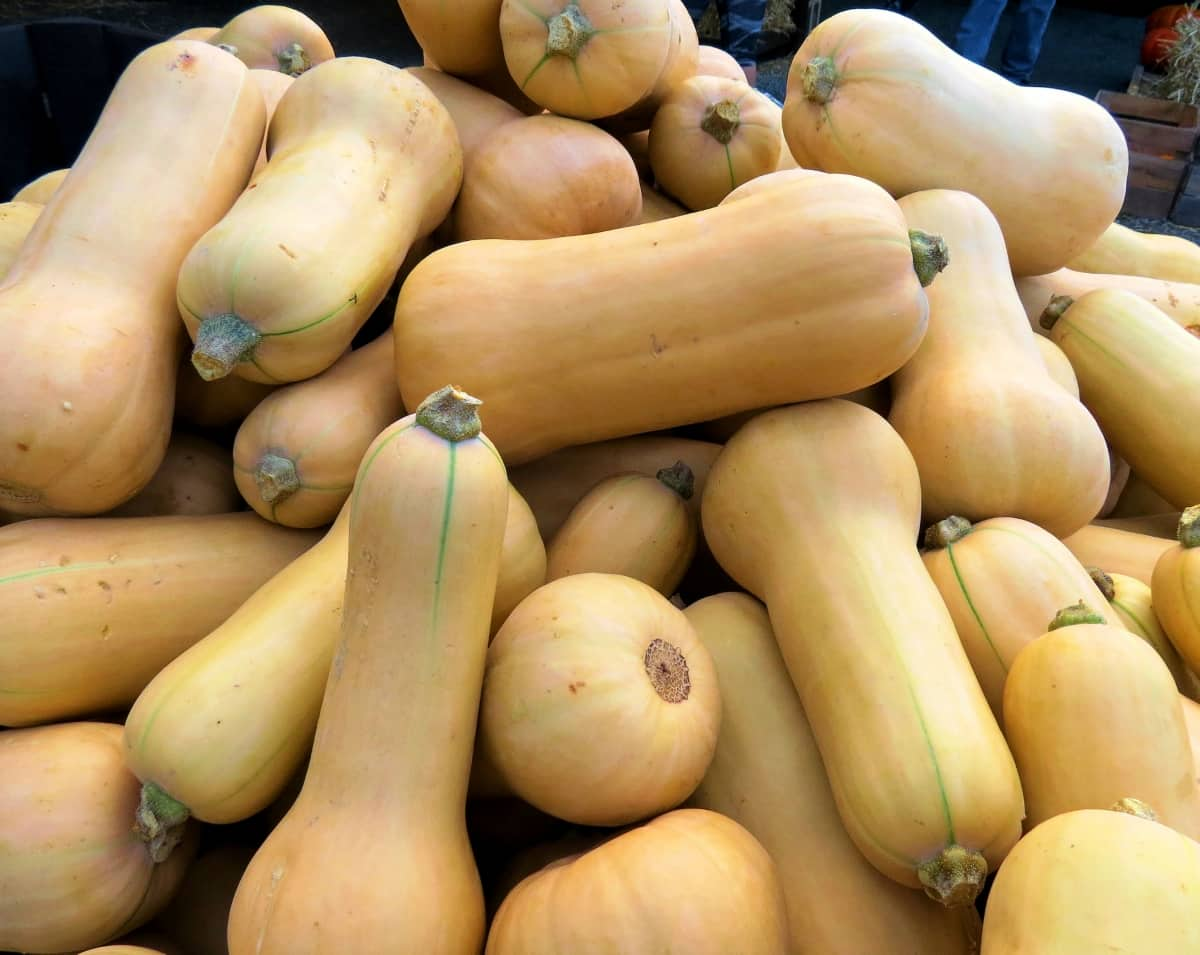Butternut squash, a winter squash variety, is renowned for its cooking versatility and nutritional punch. Whether roasted, pureed, or used in a soup, this squash brings a sweet, nutty flavor to your dishes. However, it’s not just the end product that’s rewarding; the journey of growing butternut squash is equally fulfilling. Here we learn the steps and measures to grow and care for butternut squash successfully.

How to Grow and Care for Butternut Squash
Best Soil for Growing Butternut Squash
The soil is the first thing you need to consider when growing butternut squash. Butternut squash plants thrive in loose, well-draining soil. They prefer soil rich in organic matter, which provides necessary nutrients for the plant’s growth. You can make the soil richer by adding compost or aged manure. This will improve soil fertility and help retain water, essential for the plant’s health.
The soil’s pH level, a measure of how acidic or basic it is, should ideally be between 6.0 and 7.0. This is slightly acidic to neutral. To adjust the soil pH, you can use lime to raise it or sulfur to lower it. However, add these amendments sparingly, as too much can harm the plants. A soil testing kit can be a valuable tool for determining the current pH level of your soil.
Sunlight Requirements for Healthy Butternut Squash
Sunlight plays a crucial role in the growth of butternut squash. These plants love the sun and need plenty of it to grow well. Optimal growth of butternut squash necessitates a daily exposure to full sun for a minimum of six to eight hours. More sunlight often means more energy for the plant, leading to better growth and bigger fruits.
Remember that while butternut squash needs lots of sun, it also requires protection from extreme heat. If temperatures in your area regularly exceed 90 degrees Fahrenheit, provide some shade for the plants during the hottest part of the day to prevent sun scorching or wilting.
Propagation of Butternut Squash From Seed
Initiating butternut squash cultivation from seeds is a straightforward and gratifying task. Commence by sowing the seeds in indoor pots about a month prior to the final anticipated spring frost. The seeds should be embedded an inch deep into the soil, maintaining soil moisture until germination, typically occurring within 7-14 days. Upon the subsidence of frost threat and soil warming, the juvenile plants are ready for outdoor transplantation.
Select a garden location that aligns with the previously mentioned sunlight and soil conditions. Plant the seedlings at a distance of 3 feet to accommodate healthy growth. Alternatively, you have the option to sow the seeds directly outdoors, provided that the soil temperature consistently surpasses 60 degrees Fahrenheit. Plant 2-3 seeds about an inch deep and 3 feet apart, thinning to the strongest plant after germinating.
Watering Schedule for Butternut Squash Plants
Watering is crucial for butternut squash, especially during flowering and fruit formation. The plants prefer a steady, deep watering schedule rather than frequent light watering. Aim to water the plants once a week, ensuring the water penetrates the soil deeply. Avoid getting the leaves and fruit wet to prevent fungal diseases. Instead, water them at the base. If your area receives a lot of rain, you may need to adjust your watering schedule accordingly. Too much water can be as harmful as too little, leading to root rot.
In case you missed it: How to Grow and Care for Spaghetti Squash: A Comprehensive Guide

Growing Butternut Squash in Pots/Containers
Growing butternut squash in containers is a great option with limited garden space. The container should be large enough to accommodate the plant’s growth, with a minimum diameter of 18 to 24 inches and the same depth. Fill the pot with good-quality potting soil mixed with compost for added nutrients.
Plant one or two seedlings per pot. Ensure the pot has good drainage to prevent waterlogging. Place the pot in a sunny location and follow the watering and fertilizing recommendations given earlier. Also, since container-grown plants can dry out quicker, you may need to water more frequently. Remember to check the soil regularly.
Fertilizer Recommendations for Butternut Squash
Butternut squash, like all squash varieties, are heavy feeders. They appreciate regular feeding with a balanced, all-purpose vegetable fertilizer. Use the fertilizer per the provided guidelines, typically once at planting and another at blooming. Compost or aged manure, organic alternatives, offer nutrient provision and soil structure enhancement. Applying a compost layer around the plants aids in moisture retention and weed control.
Pruning and Trellising Methods for Optimal Butternut Squash Growth
Pruning and trellising can help optimize butternut squash growth. Pruning involves removing plant leaves and vines for better airflow and sunlight penetration. It also directs more of the plant’s energy toward fruit production. Promptly eliminate any withered or infected foliage once detected. Also, you can pinch off the tips of the main vine and side branches to encourage bushier growth.
Trellising is another effective method, especially if space is limited. Educate the vines to ascend a robust trellis or fence, thus elevating the plants from the soil and mitigating the likelihood of disease and pest issues. Be sure to tie the vines gently to the trellis, being careful not to damage them.
Preventing Pests and Diseases in Butternut Squash
Butternut squash plants can attract various pests and diseases. Regular inspection is crucial to catch and address issues early. Common pests include squash bugs, cucumber beetles, and vine borers. To control these pests, use floating row covers, handpick them off, or use an insecticidal soap. Planting companion plants like nasturtiums or marigolds can also help deter pests. Common diseases include powdery mildew and bacterial wilt. To manage these issues, ensure good air circulation, avoid overhead watering, and remove affected leaves.
Harvesting and Storing Butternut Squash
Harvest butternut squash when the skin turns from light to deep tan and becomes hard. Typically, this occurs towards the end of summer or the beginning of fall. Sever the squash from the vine, ensuring to leave approximately an inch of the stem to mitigate rot. After harvesting, cure the squash in a warm, sunny location for about two weeks. This helps harden the skin and improve flavor. Once cured, you can store the squash in a cool, dry place for several months.
In case you missed it: How to Increase Female Flowers in Squash: Explained in 10 Simple Steps

Conclusion
Growing and caring for butternut squash might require effort and attention, but the rewards are worth it. This versatile vegetable adds flavor to your meals and brings joy to the gardening process. By following this comprehensive guide, you’re on your way to a bountiful butternut harvest.
- Feed Your Flock for Less: Top 10 Tips to Save on Chicken Feed
- Ultimate Guide to Ossabaw Island Hog: Breeding, Raising, Diet, and Care
- Hatching Answers: The Top 10 Reasons Your Chickens Aren’t Laying Eggs
- Eggs and Economics: Breaking Down the Cost of Raising Backyard Chickens
- Defend Your Greens: Proven Methods to Keep Iguanas Out of Your Garden
- Ultimate Guide to Cinnamon Queen Chicken: A Comprehensive Guide for Beginners
- Ultimate Guide to California Tan Chicken: Breeding, Raising, Diet, Egg-Production and Care
- Ultimate Guide to Marsh Daisy Chicken: Breeding, Raising, Diet, and Care
- 10 Types of Chicken Farming Businesses You Can Start for Profits